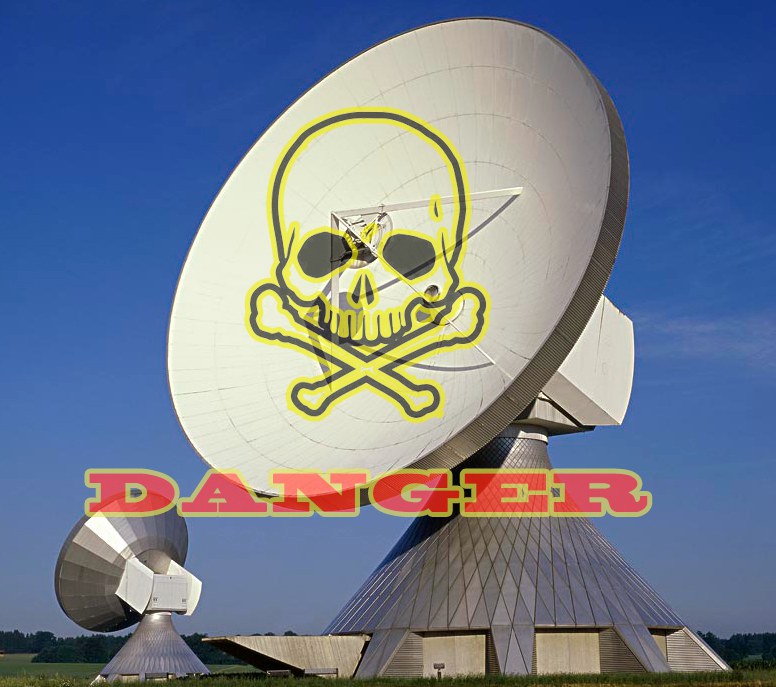
The source of satellite antenna electromagnetic radiation
Satellite earth station is used to receive signals from satellite or transmit signals to satellite. Usually satellite earth station consists of antenna, transmitter, receiver, terminal, communication controller and power supply, as shown in Fig.1 below:
 The satellite antenna, RF transmitter, power amplifier and waveguide transmission feed line among satellite earth stations will all lead to problems of electromagnetic radiation. But the affection range of RF transmitter, power amplifier and waveguide transmission feed line is narrow, mainly refers to the 1~2 meters area around the equipment and feed line. While the satellite antenna is the main electromagnetic
The satellite antenna, RF transmitter, power amplifier and waveguide transmission feed line among satellite earth stations will all lead to problems of electromagnetic radiation. But the affection range of RF transmitter, power amplifier and waveguide transmission feed line is narrow, mainly refers to the 1~2 meters area around the equipment and feed line. While the satellite antenna is the main electromagnetic
radiation source among satellite earth stations.
The radiation form of satellite antenna
When the axial direction of antenna points to the satellite in the space, it will realize the point-to-point communication between earth station and satellite. The electromagnetic wave signals transmitted from antenna to sky is tubular beam and the axial direction (namely main lobe of electromagnetic wave) points to satellite; while there is also sidelobe except the main beam of electromagnetic wave, which also called minor lobe. The radiation strength of electromagnetic wave is much lower than main lobe’s. The radiation picture of satellite antenna is as shown in Fig.2 below:
 The signals earth station antenna received comes from satellite in space. The signals transmitted from satellite will become extremely weak (usually only several PW) when arrive at the ground after about 36000 Km transmission and attenuation, so it won’t affect the electromagnetic radiation environment on the ground.
The signals earth station antenna received comes from satellite in space. The signals transmitted from satellite will become extremely weak (usually only several PW) when arrive at the ground after about 36000 Km transmission and attenuation, so it won’t affect the electromagnetic radiation environment on the ground.
The electromagnetic radiation in the front area of satellite earth station antenna is mainly from the signals transmitted by earth station antenna, and mainly caused by the sidelobe of antenna electromagnetic wave.
According to the distance from antenna, we usually divide the front radiation area into far-field region and near-field region, which are always separated by Rayleigh distance d0: when d<d0, it’s near field region; when d>d0, it’s far field region.
The formula of Rayleigh distance is: d0=2D2/λ ……………….………..
d0 ——Rayleigh distance, m;
D ——Antenna diameter, m;
λ —— Wave length, m.
In conclusion, the radiation area of satellite antenna is mainly near-field region when reach the Rayleigh distance.
Electromagnetic radiation strength calculation
According to Formular 2, calculate the power density of antenna tubular beam on axis. The electromagnetic radiation outside the tubular beam area is caused by antenna electromagnetic sidelobe. The radiation power density is far lower than main beam’s, and it will attenuate rapidly with the off-axis distance’s increasing. In general,when the distance increase a diameter length, the attenuation will change 12dB. The formular to calculate the off-axis power density outside the tubular beam is:
P= Pd ×10 ![]() (μW/cm2) ……………………..(3)
(μW/cm2) ……………………..(3)
D —— Antenna diameter;
Pd—— All the Near-field region is calculated as Pdmax;
r ——Vertical distance between prediction point and tubular beam border.
The calculation point outside the tubular beam area is as shown in Fig.3 below:







